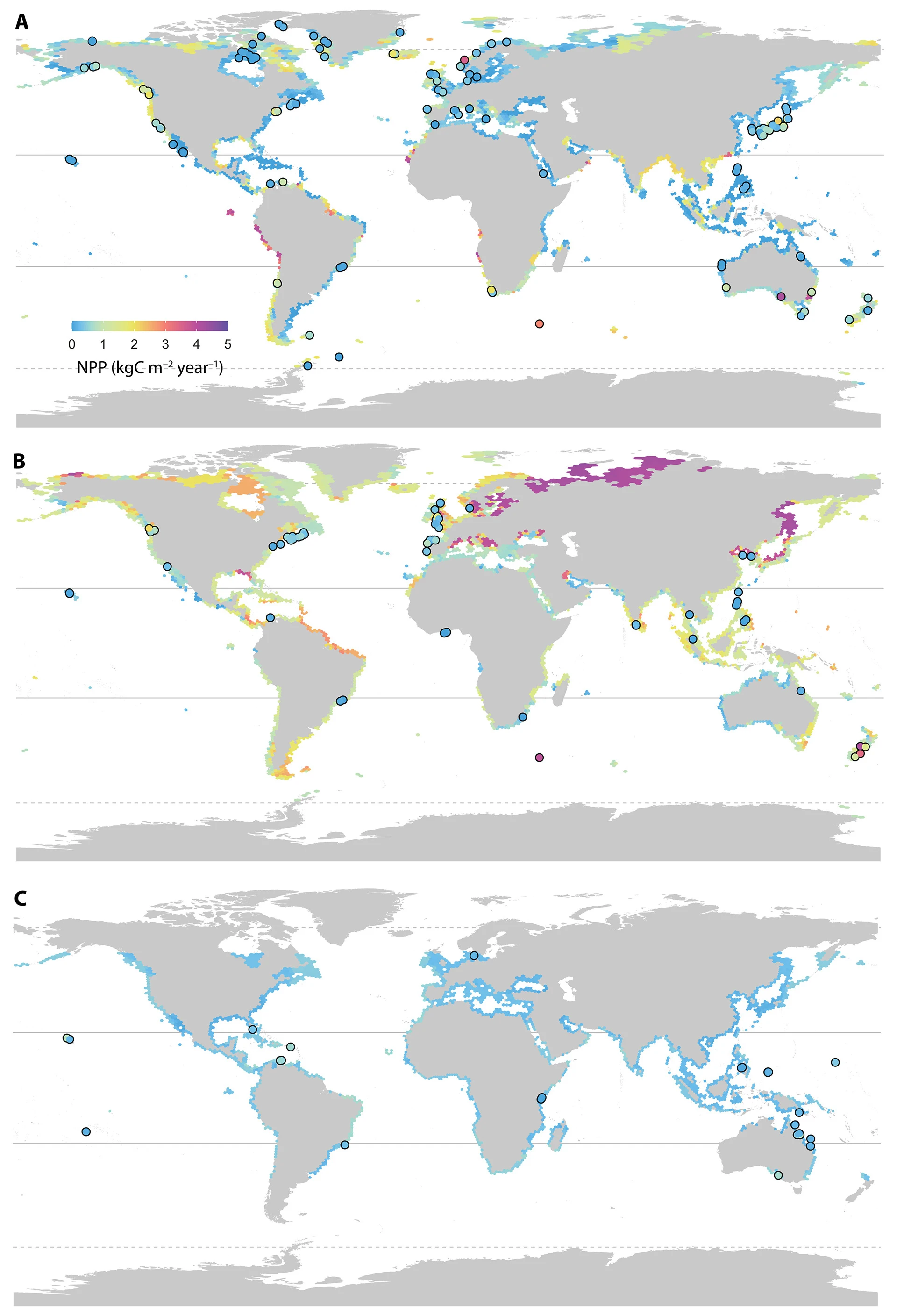Scientific publication
Global seaweed productivity
Seaweed productivity is strongly related to climatic variables, peaking at temperate latitudes and exhibiting exceptionally high per-area production rates, 10 times higher than coastal phytoplankton in temperate and polar seas.
Credits: Photo by Shane Stagner on Unsplash
The magnitude and distribution of global net primary production (NPP) remains poorly understood. In this paper we used machine learning modelling to predict the productivity of seaweed habitats with information on climate conditions and a compilation of in situ annual NPP measurements across >400 sites in 72 geographic ecoregions.
The paper shows that seaweed NPP is strongly coupled to climatic conditions, peaking at temperate latitudes, dominated by forests of large brown seaweeds, and exhibiting exceptionally high per-area production rates, being up to 10 times higher than coastal phytoplankton in temperate and polar seas. These results show that seaweed NPP is a strong driver of production in the coastal ocean and call for its integration in the oceanic carbon cycle.

Figure. Globally predicted NPP of subtidal (A) and intertidal (B) seaweed forests dominated by large brown canopy-forming algae and (C) subtidal algal turfs. Points show the location of the study sites included in our database (raw NPP is indicated by the colored dots). Lines depict the tropics (straight) and polar circles (dashed).
Main reference
Pessarrodona, A., Assis, J., Filbee-Dexter, K., Burrows, M. T., Gattuso, J.-P., Duarte, C. M., Krause-Jensen, D., Moore, P. J., Smale, D. A., Wernberg, T. (2022). Global seaweed productivity. Science Advances.
- Featured publications